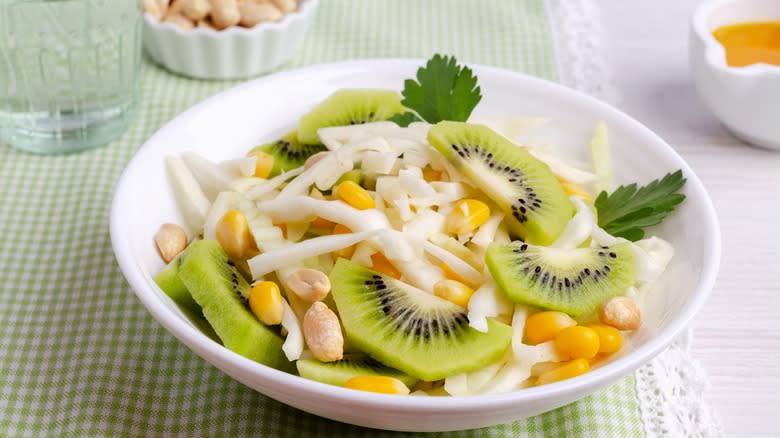Using Different Cutting Methods For Salad Additions Makes Every Bite Exciting

A salad can take on countless ingredient combinations, dressings, and cooking styles, and it is one of the most diverse dish categories on earth. It's also a dish that values texture as much as flavor. The contrast between crunchy, juicy, tender, and chewy is certainly as pleasing to the senses as the contrast between flavor categories. However, texture isn't just about the makeup of each ingredient, but also about size, shape, and mouthfeel.
Using different cutting methods for salad additions creates an exciting depth of texture that'll make every bite exciting. Mandolins, graters, knives, spiralizers, and vegetable peelers should all be at your disposal for salad preparation. Different tools and methods will transform vegetables into different shapes, consistencies, and even flavors that you can mix and match in your salad, tying everything together with a toss in your favorite salad dressing.
Grating carrots and beets, for example, turns them into softer, almost melt-in-your-mouth garnishes that will coat torn pieces of lettuce, crunchy cucumber rounds, and tender, half-moon-shaped tomato slices. A salad of spiralized zucchini, halved cherry tomatoes, and sliced olive rings supply a diversity of shapes as exciting as their range of savory and umami flavors. You can also use two different cutting methods for the same vegetable to unlock its textural potential. You can julienne broccoli stalks into matchsticks while dicing broccoli crowns into fluffy, fibrous bite-sized mounds.
Read more: 13 Simple Tricks To Pick The Best Fresh Fruit Every Time
Diverse Ingredients Make For A Superior Salad

Not only can you diversify the form and mouthfeel of each salad addition with different cutting methods, but you can also use a mixture of raw and cooked veggies for a contrast of taste and texture. A tuna nicoise salad is the perfect example, combining tender cooked green beans, pillowy new potatoes, and the crunch and freshness of romaine, cherry tomatoes, and diced red onions.
You could add roasted, halved Brussels sprouts to an Asian salad with shredded Napa and red cabbage, julienned carrots, and quartered radish in a peanut sauce, which would run the gamut of shapes and textures while also adding a rich caramelized bitterness from the roasted Brussels sprouts.
While many salad additions are available year-round, the best salads will feature veggies at the height of their seasonality. Instead of using the salad dressing alone as a flavor agent, you should still season your greens with salt and pepper both before and after tossing in the dressing. In the case of hearty greens and bitter lettuce types, like radicchio, cabbage, and kale, salt will enhance their flavors and tenderize them for a more delightful taste and a more palatable texture. If you want to capitalize on the crunchiness of a raw vegetable, submerge the vegetables in water and leave them in the fridge overnight, or for a few hours before preparing your salad. Cold water works especially well to breathe new life into root vegetables like carrots, beets, and radishes.
Read the original article on Tasting Table.

 Yahoo Lifestyle
Yahoo Lifestyle 
